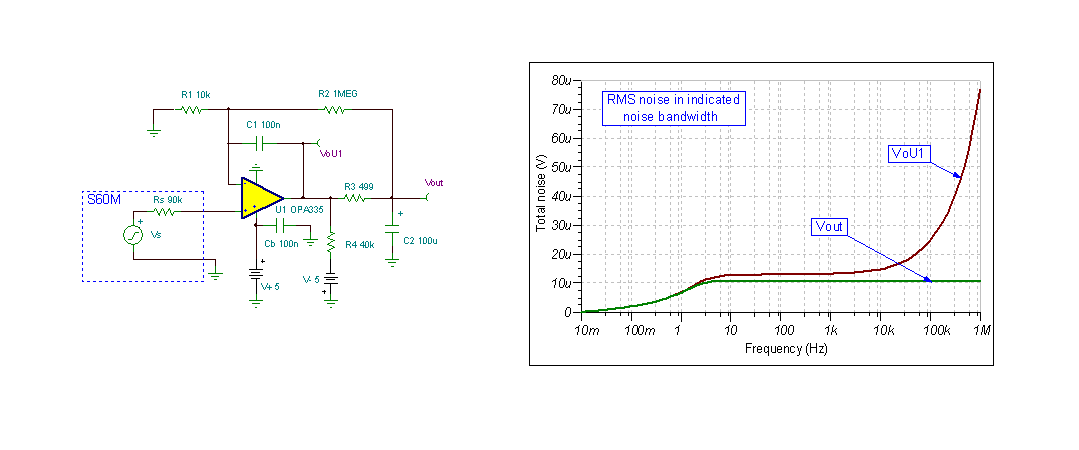Infrared Thermopile Detector Amplifier
This amplifier is designed for a thermopile infrared detector such as an S60M from Dexter Research. This detector output is 101mV/mW with a source resistance of 90k. A CMOS autozero OPA335 is used to minimize offset and drift as well as 1/f noise. The detector response time is 12ms so the amplifier frequency response is rolled off to minimize its total output noise.
R3 & C2 add an additional pole to the amplifier’s rolloff; this improves the total output noise compared to the conventional R2 & C1 feedback filter. This improvement is evident in the noise plot below. U1 output is unipolar, so C2 can be a good tantalum capacitor.
The OPA335 output stage can be pulled- down to zero by an external negative supply V-, even when operated on a single +5V power supply.
By not operating the op amp at the conventional “Vcc/2” bias point, the output is capable of full rail- to- rail out-put, increasing the detector amplifier’s dynamic range. (Circuit created by Neil P. Albaugh, TI – Tucson)

Online Simulation of the Infrared Thermopile Detector Amplifier Circuit
The great feature of the TINA circuit simulator that you can analyze this circuit immediately with TINACloud the online version of TINA. Of course you can also run this circuit in the off-line version of TINA.
Click the link below to invoke TINACloud and analyze the circuit.
https://www.tinacloud.com/tinademo/tina.php?c=54b3ae1ebcf37%3A415378
You can send this link to any TINACloud customers and they can immediatelly load it by a single click and then run using TINACloud.
Michael Koltai
www.tina.com


